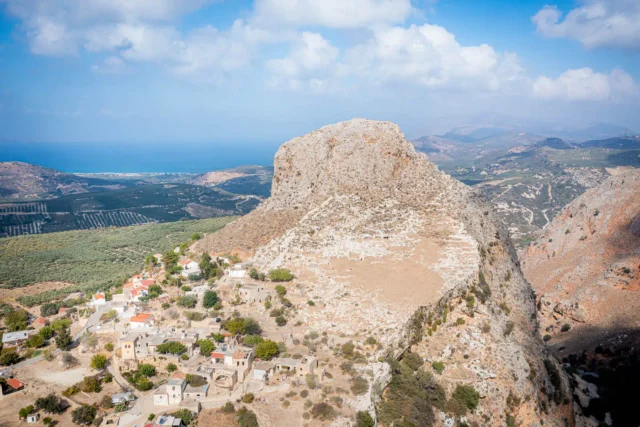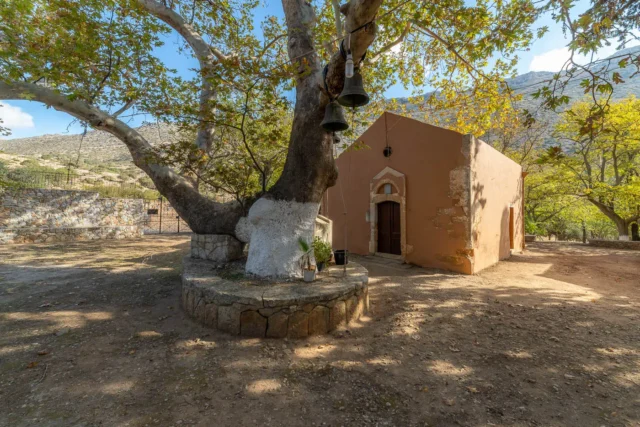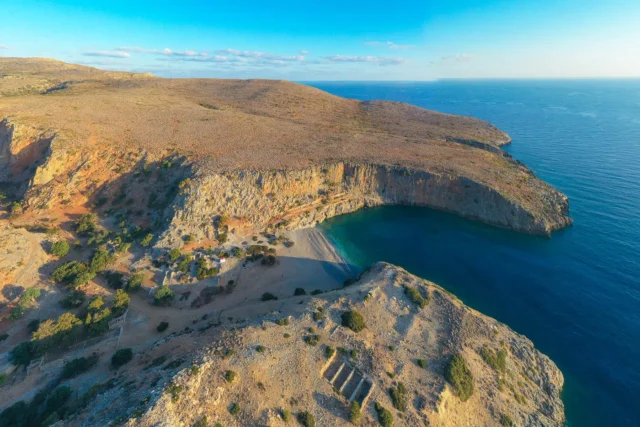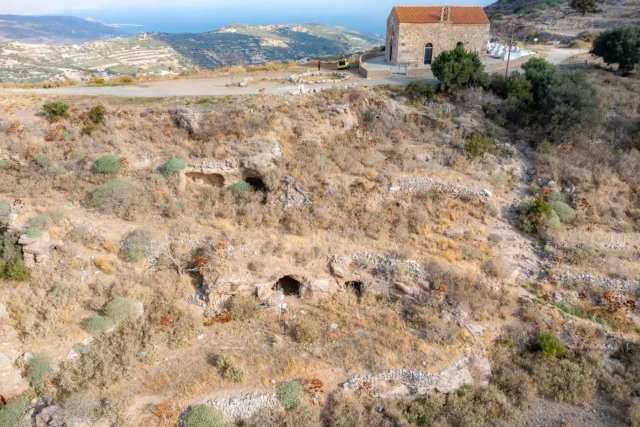The Minoan tholos tomb at Maleme, Crete, is a remarkable example of Bronze Age funerary architecture. Located near the village of Maleme in western Crete, the tomb is known for its impressive size, long entrance passage, and monumental doorway. It stands as a testament to the engineering skills and architectural sophistication of the Minoans, providing valuable insights into their burial customs and beliefs.
Discovery and Excavation
The tholos tomb at Maleme was first discovered in the early 20th century, but its contents were unfortunately plundered by antiquities hunters, a common occurrence at archaeological sites in Greece during that period. The tomb suffered further damage during World War II when German bombings led to the collapse of its domed roof. In 1966, the site was systematically excavated by archaeologist Kostas Davaras, who meticulously documented the remaining structure and its architectural features.
Architecture and Features
The tholos tomb at Maleme is characterized by its large size and a long entrance passage, or dromos, which measures 13 meters in length. The entrance doorway is particularly impressive, standing 3 meters high and 1.60 meters wide. It is constructed of massive stone blocks and leads into the circular chamber of the tomb. The most striking feature of the tomb is the massive lintel block made of poros stone, which spans the entrance doorway. This lintel block is significantly larger than any other building material used in the tomb’s construction, highlighting the architectural prowess of the Minoans.
The Vault
The vault of the tholos tomb at Maleme, although now collapsed, would have been a masterpiece of Minoan engineering. Tholos tombs typically feature corbelled vaults, where stones are laid in overlapping courses, each course projecting slightly inward from the one below, until they meet at the top. This technique creates a dome-like structure that is both strong and aesthetically pleasing. The vault at Maleme would have been constructed in this manner, creating a spacious and imposing chamber for the deceased.
Relationship with Other Vaults
The tholos tomb at Maleme shares architectural similarities with other tholos tombs found throughout Crete and mainland Greece. These tombs, dating from the Bronze Age, exhibit variations in size, construction techniques, and decorative elements, reflecting regional differences and chronological developments. The tomb at Maleme, with its large size and monumental doorway, is comparable to some of the grandest tholos tombs, such as the “Treasury of Atreus” at Mycenae. These tombs served as burial places for elite members of society and played an important role in the mortuary practices of the time.
Grave Goods and Burials
Despite being plundered, the excavation of the tholos tomb at Maleme revealed a number of significant grave goods, including bronze tools, pottery vessels, and fragments of jewelry. These artifacts provide valuable clues about the social status and cultural practices of the people buried in the tomb. The tomb was likely used for elite burials, as suggested by the quality of the grave goods and the tomb’s elaborate architecture.
Current State and Significance
The tholos tomb at Maleme is currently accessible to visitors and offers a unique opportunity to experience the grandeur of Minoan funerary architecture. The site is surrounded by olive groves and offers a scenic view of the Cretan Sea. It remains an important archaeological site and continues to be studied by scholars, contributing to our understanding of Minoan civilization and its cultural practices.
Site: Key Points
- Construction Period: Late Bronze Age (circa 1450-1200 BCE)
- Location: Maleme, Chania, Crete
- Dimensions: Diameter: 8.15 meters (26.74 feet), Height: 2.95 meters (9.68 feet)
- Historical Significance: Used for elite burials, reflects Minoan mortuary practices
- Current Status: Partially collapsed, accessible to visitors
References
- Nil Dirlik, 2012, The Tholos Tombs of Mycenaean Greece, Master’s thesis in Classical Archaeology and Ancient History, Uppsala University.
- Costis Davaras, 1976, Guide to Cretan Antiquities, Third Revised Edition, Eptalofos S.A. Athens-Greece.
- V.P. Petrakis, 2006, Late Minoan III and Early Iron Age Cretan Cylindrical Terracotta Models: A Reconsideration, The Annual of the British School at Athens, No. 101, 183-216.

























There are no comments yet.